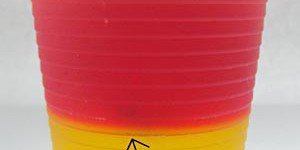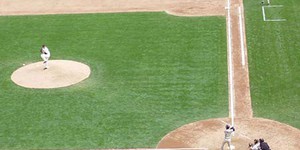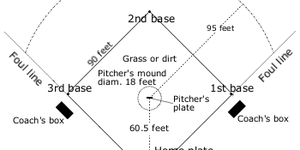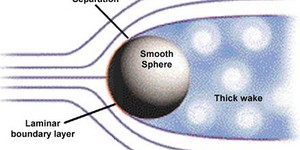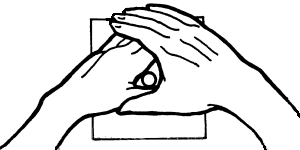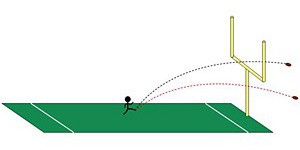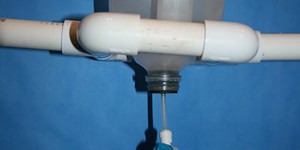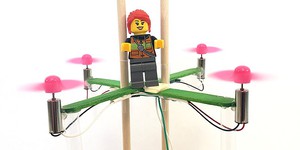Others Like “The Physics of Cheating in Baseball” (top 20 results)
|
What keeps you in your seat of a giant loop-de-loop roller coaster? Surprisingly, it is not the seatbelt but the seat! It works because of something called centripetal force and it does much more than make a great roller coaster. It keeps a satellite in orbit and you in your bicycle seat during a turn. How does it work?
Read more
Think of hitting a baseball, heading a soccer ball into the net, or hitting a tennis ball with a racquet. Where the ball goes depends on...what? You can set up a simple model to start your investigation. You'll need a marble, a flat piece of wood, a flat piece of cardboard, a pencil, a ruler, a protractor, and a level surface. Lay down the cardboard down on a level surface and set up the flat piece of wood at one edge. The wood will act like a wall, and you're going to roll the marble at…
Read more
Here's a sports science project that shows you how to use correlation analysis to choose the best batting statistic for predicting run-scoring ability. You'll learn how to use a spreadsheet to measure correlations between two variables.
Read more
Have you ever wondered how playing in a certain stadium affects how well the athletes perform? Major League Baseball (MLB) is played in ballparks that have their own individual quirks when it comes to the exact layout of the field. How an individual ballpark affects player performance, which is known as ballpark effects, is heavily investigated in the field of baseball. To name just a few parks and their different traits, Fenway Park (the long-time home ballpark for the Boston Red Sox in…
Read more
Have you ever wondered why golf balls have a pattern of dimples on their surface? The dimples are important for determining how air flows around the ball when it is in flight. The dimple pattern, combined with the spin imparted to the ball when hit by the club, greatly influence the ball's flight path. For example, backspin generates lift, prolonging flight. When the ball is not hit squarely with the club, varying degrees of sidespin are imparted to the ball. A clockwise sidespin (viewed from…
Read more
Everyone's used to the idea that people are either right-handed or left-handed for particular tasks. That is, one hand is preferred (or dominant) over the other for a particular task. Did you know that people also have a dominant eye? This project is designed to look for consequences of having the dominant hand and eye on the same side of the body (uncrossed) vs. having the dominant hand and eye on opposite sides of the body (crossed).
Read more
Did you know that throwing, kicking, and punting a football all involve the science of projectile motion? A star NFL® quarterback, kicker, and punter each need to have a very good understanding of how a football moves through the air in order to help them win games. In this science project, you will set up a rubber band-powered catapult to represent a field goal kicker, and study how changing the distance from the goalposts affects how hard it is to accurately kick a field goal.
Read more
Tennis racquets, baseball bats and golf clubs all vibrate when they hit the ball. You can often feel it in your hands, particularly if you "mis-hit" the ball. You can find the point(s) on your racquet, bat or club—called the "sweet spot"—that minimize unwanted vibrations. Low-tech method: hang the racquet or bat straight up and down with a string from its handle. Lightly hold the handle with your thumb and forefinger and have a helper sharply tap the bat, strings or club face…
Read more
Water is an interesting thing. We drink it, swim in it, and wash ourselves with it. We can get energy from
water by damming it and sending it through a turbine. But did you know that we can use the natural electrical
charges present in water and a Kelvin electrostatic generator to create sparks? You can even use a
Kelvin electrostatic generator to temporarily light a bulb! Now that is one bright idea!
Read more
How does weight affect a drone's speed? Is there a limit to how much weight a drone can lift? Find out with your own mini popsicle stick drone in this fun science project!
Read more
|
Explore Our Science Videos
DIY Mini Propeller Car
Junkbots Lesson Plan Introduction
How to Build a Toy Car - Science Project

